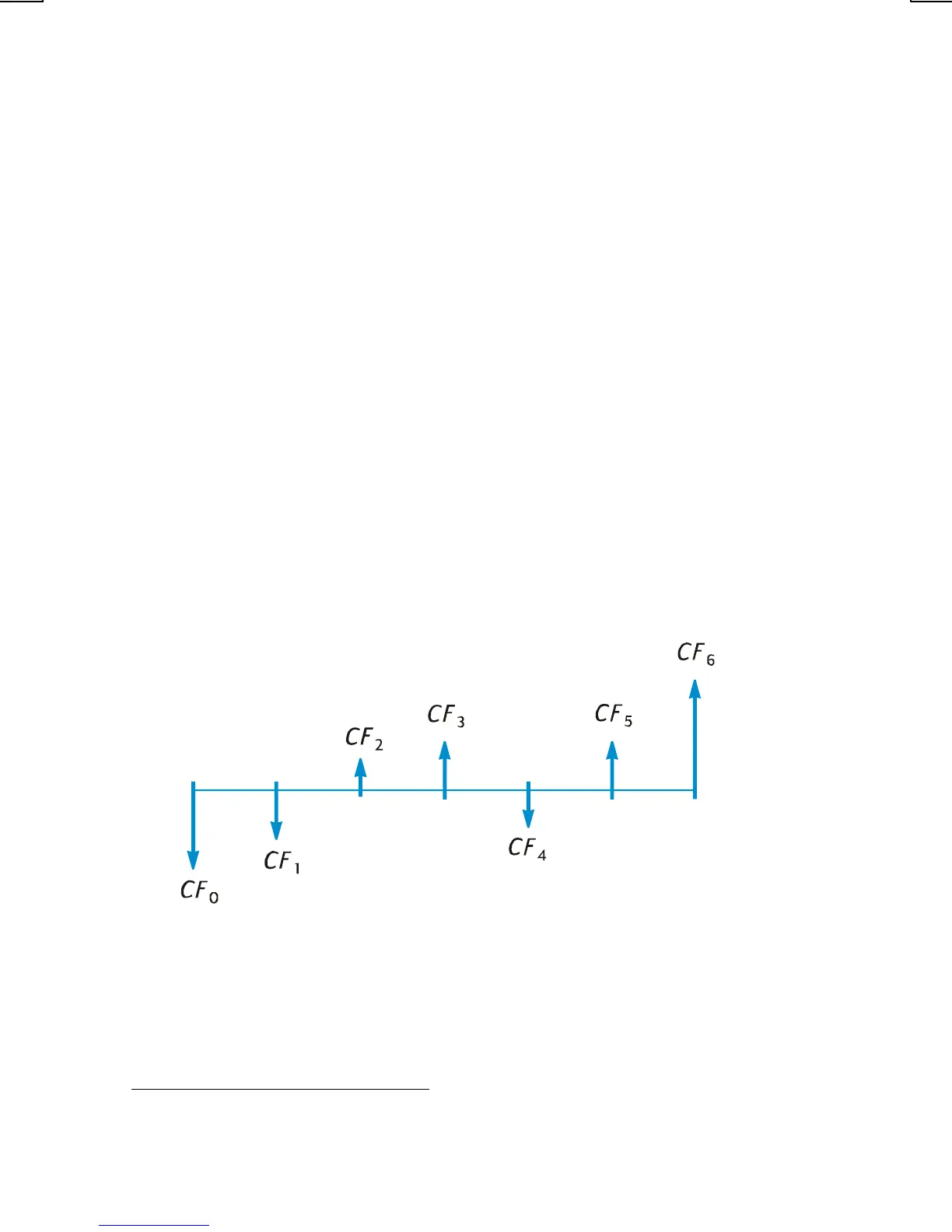72
File name: HP 12c Pt Converted_user's guide_English_HDP0F123E02_080207 Page: 280 of 281
Printed Date: { 2007/8/2Dimension: 14.8 cm x 21 cm
Section 4
Additional Financial Functions
Discounted Cash Flow Analysis: NPV and IRR
The hp 12c platinum provides functions for the two most widely-used methods of
discounted cash flow analysis:
fl
(net present value) and
fL
(internal
rate of return). These functions enable you to analyze financial problems involving
cash flows (money paid out or received) occurring at regular intervals. As in
compound interest calculations, the interval between cash flows can be any time
period; however, the amounts of these cash flows need not be equal.
To understand how to use
fl
and
fL
, let’s consider the cash flow
diagram for an investment that requires an initial cash outlay (CF
0
) and generates
a cash flow (CF
1
) at the end of the first year, and so on up to the final cash flow
(CF
6
) at the end of the sixth year. In the following diagram, the initial investment is
denoted by CF
0
, and is depicted as an arrow pointing down from the time line
since it is cash paid out. Cash flows CF
1
and CF
4
also point down from the time
line, because they represent projected cash flow losses.
NPV is calculated by adding the initial investment (represented as a negative cash
flow) to the present value of the anticipated future cash flows. The interest rate, i,
will be referred to in this discussion of NPV and IRR as the rate of return.
*
The
value of NPV indicates the result of the investment:
z If NPV is positive, the financial value of the investor’s assets would be
increased: the investment is financially attractive.
*
Other terms are sometimes used to refer to the rate of return. These include: required rate of
return, minimally acceptable rate of return, and cost of capital.

